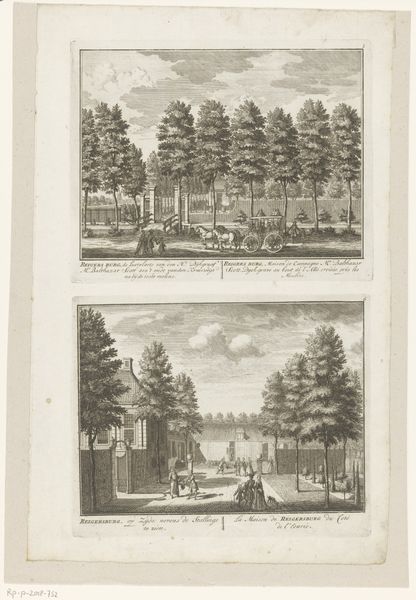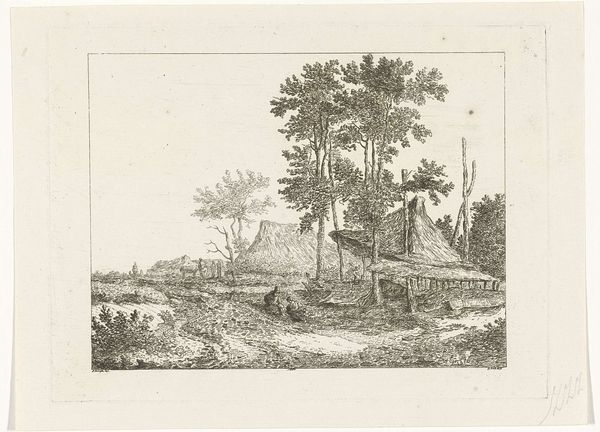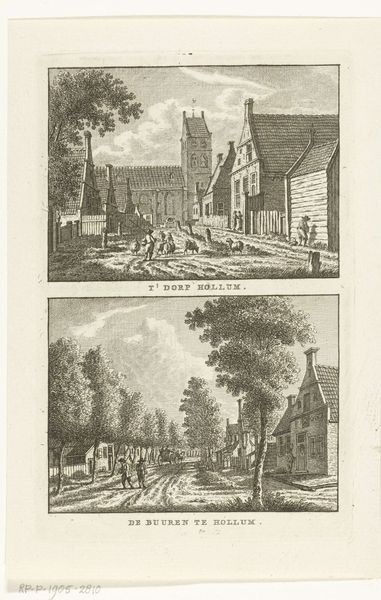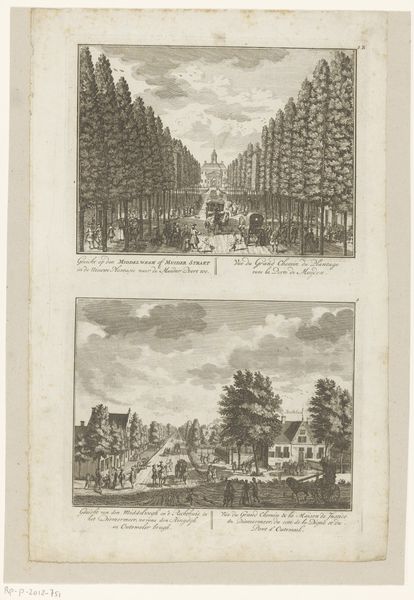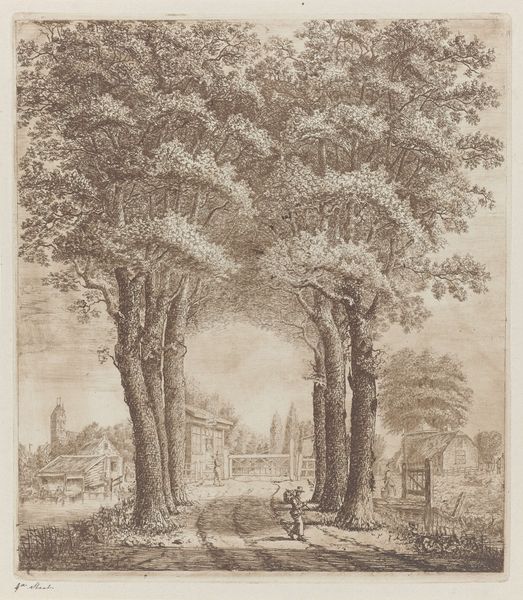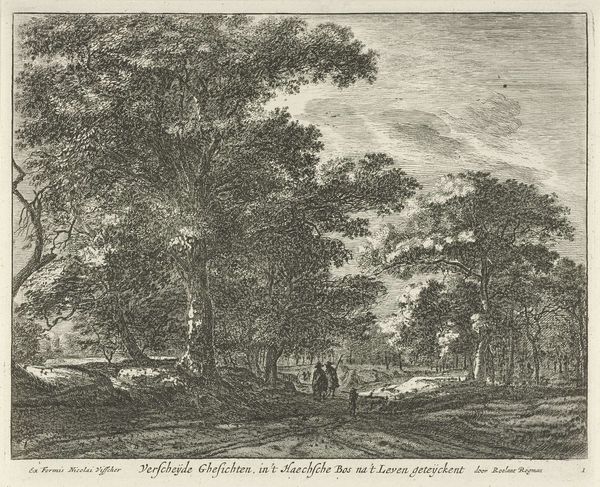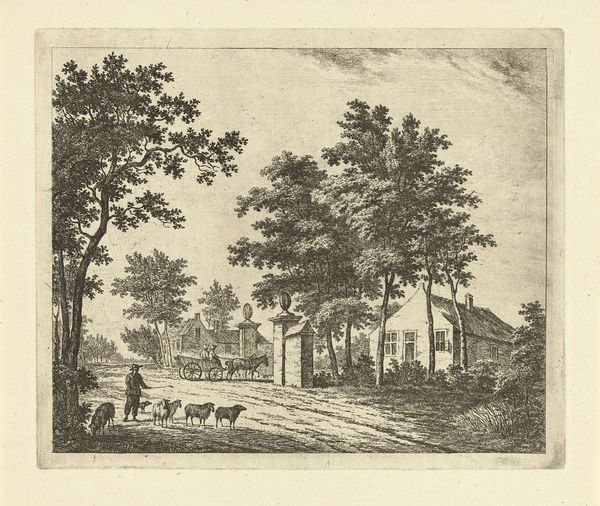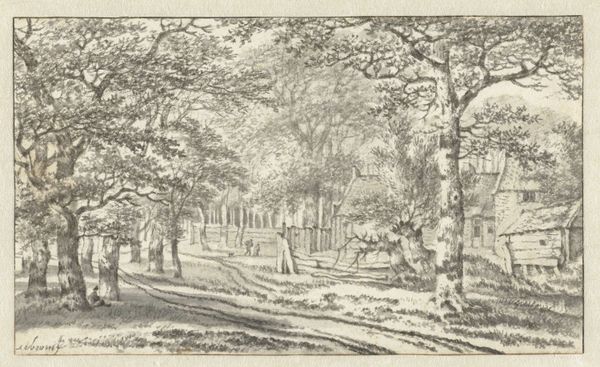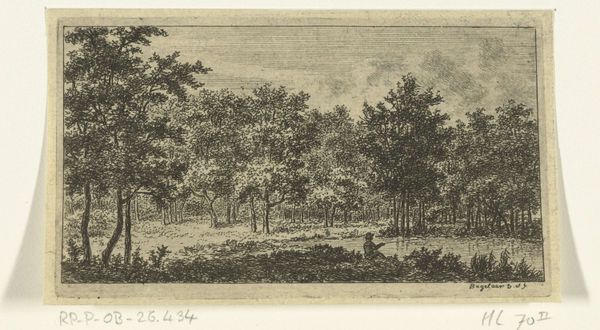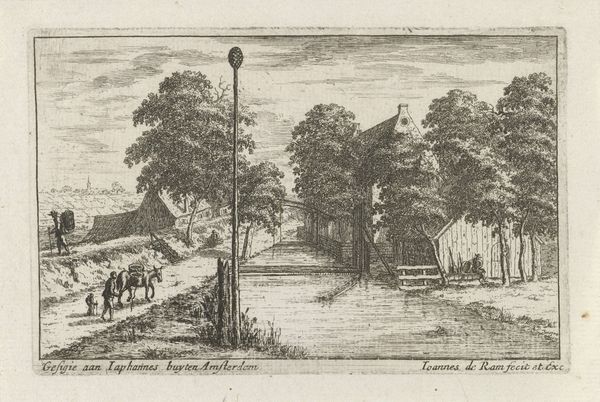
drawing, print, etching, engraving
#
drawing
#
dutch-golden-age
# print
#
etching
#
landscape
#
cityscape
#
engraving
#
realism
Dimensions: height 170 mm, width 110 mm
Copyright: Rijks Museum: Open Domain
Curator: What strikes me first is the immediate sense of serenity, this hushed stillness conveyed through delicate lines. It’s almost melancholic, isn't it? Editor: Indeed. We're looking at a work titled "Twee dorpsgezichten te Ballum op Ameland," or "Two Village Views of Ballum on Ameland," created between 1786 and 1792 by Carel Frederik Bendorp. It employs etching and engraving to capture two different scenes. It reminds us of a time when village life moved at a slower pace. Curator: The technique is fascinating, especially if you think about it being an etching and engraving. These aren’t casual sketches but intentional attempts to document life. But whose life is being centered in these depictions? Notice how the landscape is punctuated with these burghers while women occupy ancillary places. This gives us insight into social norms, right? Editor: That’s spot on. But isn't it lovely? Look how Bendorp uses these lines to construct the leaves on the trees. It almost has this hazy quality, and everything is evenly exposed, creating this very gentle tonal quality to the light as it is distributed evenly in the sky. There isn’t this clear articulation of highlights and shadows like in contemporary baroque paintings. Curator: You’ve put your finger on it. We are very far away from the aesthetics of Baroque art at this historical juncture, but there is indeed something special to the leveling quality in the artwork as a document that, by consequence, can center the experiences of people who are structurally disavowed or kept in the periphery of civic and social participation. Consider this from the angle of queer ecologies! What can it reveal about the past? Editor: I think it encourages us to re-evaluate not just the grand narratives of history but also the mundane beauty in quotidian things that has historically made living worthwhile, even despite all those challenges. This slice of time, rendered in such meticulous detail, evokes a certain fondness, don’t you think? Curator: Absolutely. It also calls on a recognition of our own temporal position in the course of modernity. The people, place, and period we are positioned in shape how we relate to each other and see things as an expression of relationality. Editor: I concur. It's like a mirror, reflecting a fragment of the past while asking us to question what has changed, or perhaps even what hasn't, when considering the present.
Comments
No comments
Be the first to comment and join the conversation on the ultimate creative platform.

